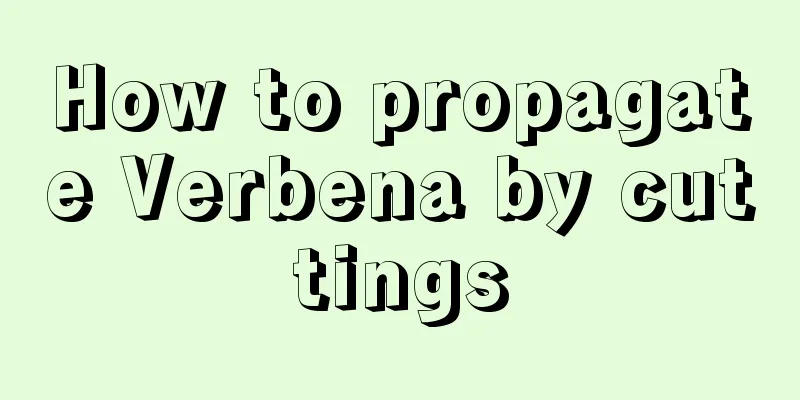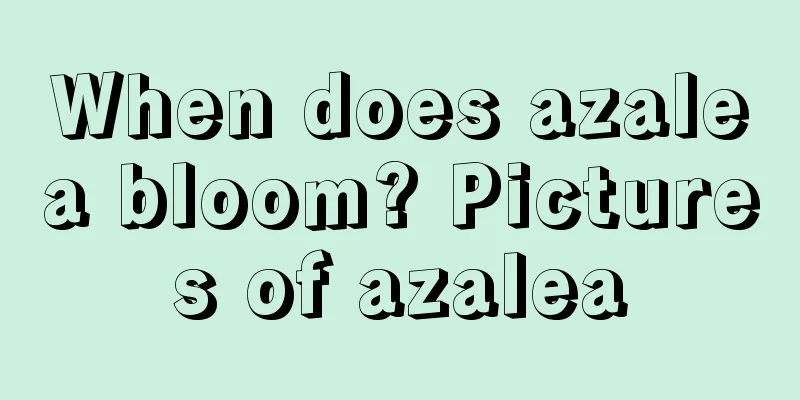How to propagate Verbena by cuttings

Cutting timeCuttings are generally taken from April to July, with temperatures around 15-20 degrees Celsius. Cutting mediumThe cutting medium must be water-retaining and permeable. It is difficult for ordinary families to get the ideal cutting medium. Here we can buy ready-made cutting medium. Medium-coarse river sand can also be used, but it needs to be rinsed with clean water several times before use, and it is best to disinfect it. Do not use river sand from saline-alkali areas as it is not suitable for the growth of flowers and plants. Selection of cuttingsCuttings are usually carried out in combination with pinching, and the thick, pest-free, and strong growing tops are selected as cuttings. Management after cuttingtemperatureThe rooting temperature of Verbena is 18-25 degrees Celsius. When the temperature is below 18 degrees Celsius, the plant will take root slowly. When the temperature is above 25 degrees Celsius, the cut ends of the cuttings are easily infected and rotted by pathogens, and the higher the temperature, the greater the rot. If the temperature is low during cuttings, you can use a film to cover the flower pot or container for cuttings. When the temperature is too high, provide shade. Place the cuttings in a cool place and mist them frequently. humidityAfter cuttings, the air humidity must be maintained at a high level, and the relative humidity should generally be maintained at 75-80%. The cuttings can be sprayed every day, 1-3 times a day. The number of sprays should be increased when the temperature is high on sunny days, and less or no spraying should be done on cloudy and rainy days. Be careful not to over-spray, as the cuttings can easily be infected by bacteria in the water and rot. illuminationCutting propagation cannot be separated from sunlight. However, the stronger the light, the higher the temperature inside the cuttings, the more vigorous the transpiration of the cuttings, the more water is consumed, which is not conducive to the survival of the cuttings. Therefore, after cuttings, 50-80% of the sunlight must be blocked. After the roots grow out, the shading net can be gradually removed: on sunny days, remove the shading net at 4:00 p.m. every day, and cover it before 9:00 am the next day. |
<<: How to repot Milan flowers
>>: What to do if Milan flowers don't bloom
Recommend
How to deal with the leggy growth of Oxalis
Treatment of Oxalis superfluous growth - suppleme...
How to identify lychee grass
1. Blades The leaves of Litchi grass are elliptic...
Can lavender be grown indoors?
Can lavender be grown indoors? Lavender can be gr...
Is the crape myrtle tree waterlogged? Is it afraid of flooding?
Is the crape myrtle tree waterlogged? Most crape ...
Can fig trees be planted in the yard?
Can I grow a fig tree in my yard? Fig trees can b...
How to choose succulent plants for beginners
Choose familiar varieties when choosing succulent...
How to tell if soil is acidic or alkaline
Look at the earth color Acidic soils are generall...
Which flowers are suitable for indoor placement?
Dianthus Dianthus has the ability to absorb sulfu...
What fertilizer is best for lilac?
Lilac fertilization time When planting lilac, if ...
Yushu growth environment conditions and characteristics
Yushu Growth Environment Conditions and Requireme...
How do peonies survive the winter outdoors in the north? Do peonies shed their leaves in winter?
1. How to spend the winter outdoors in the north ...
Seed propagation of red lotus
Seed propagation of red lotus Seed Collection See...
Why does tuberose bloom at night?
Flowers at night Although most plants bloom durin...
Litchi Planting Technology and Management
Lychees can be planted in the ground or in pots. ...
Why are the leaves of the bird of paradise turning yellow, burnt and dry?
Bird of Paradise is famous for its upright shape ...









